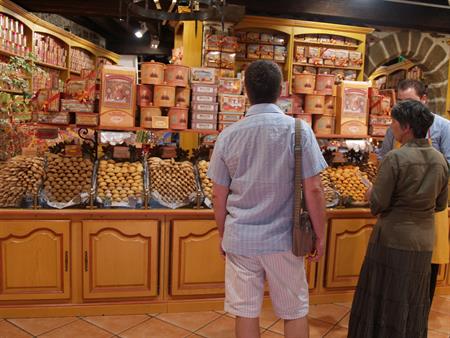
Managing a Retail Shop can involve many things; including opening and closing the store, maintaining stock control, managing sales staff, creating and maintaining shop displays, keeping the shop clean, managing security, banking and financial record keeping, and of course selling.
The physical environment of a shop can come into play in many different ways. The first thing to consider is where the shop is located. Location can be crucial to a shops success. One thing to consider is foot traffic – are there lots of people walking past the shop that can be enticed in?
Another physical environment consideration is the environment that is created in the shop. The physical environment will ultimately encourage the customer to buy. There are a few aspects you might like to consider:
- Temperature (is the temperature at a level that the customer feels comfortable and wants to stay in the shop?) If a shop is too hot or too cold, customers may leave more quickly than they would otherwise. People do not like to be uncomfortable, so it is important to ensure the temperature of the shop is good, to encourage people to feel comfortable in the environment, and therefore more likely to stay.
- Smell (does the smell encourage a customer to buy or leave?) Bad smells are not pleasant and may not encourage a person to stay. Walking into a cafe and smelling greasy food or burnt food will put some customers off. Or bad smells generally will start to make the customer wonder if they should buy from this shop. But smells can also encourage people to buy. Supermarkets will pump fresh bread smells from their bakeries into the air in the supermarket to encourage people to buy. People buy more when they are hungry and our sense of smell is an important part of our hunger. A beautiful smell of perfume in a beauty shop may encourage people to buy more perfume or the smell of leather may encourage some people to buy shoes. So smell can be important but don’t overdo it. A lovely perfume smell can sell, but a cloying over use of perfume can have the opposite effect.
- Lighting (is there sufficient lighting for the customer to see clearly, but not too bright to be blinding?) Good lighting will show off products well and encourage people to buy. But if light is too light, it may show faults in products more or make them not appear so good. Not enough light and customers may not be able to see. A typical example is clothes shops where a customer may find it hard to see the exact colour of clothes due to the lighting in the store. So good lighting is essential. But bear in mind what you are selling. If you are trying to create a cosy, romantic feel in a restaurant or coffee shop, bright lights could have the opposite effect.
- Music (is the music adding to the customers shopping experience – or distracting them and driving them out of the shop? Some businesses use upbeat, loud, fast music that drives some customers into a buying frenzy – whilst driving other customers straight out of the shop!)
- Colours and Décor. Some colours may sell better than others. Does the décor appeal to the market you are trying to target? Decor can have a positive and negative impact. A barber’s shop aiming at a trendy younger market may have posters of superheros or music or TV stars, but this may not appeal to customers who are older and want a more traditional barbers, so focussing on the client group is also important.
Presentation
Presentation is also very important. A store should be well presented in a way that a customer can find the goods they want. You often see clothes shops have clothes presented in a certain way, such as organised by style, colour or size. But some clothes shops will be off putting for customers as there is too much available in the shop. If a person cannot find what they are looking for because a store is too full, then they may go elsewhere. So it is a balancing act between putting enough stock out on display and not putting enough. Some small shops may only put out one or two items of the same clothing, then keep other sizes and colours in a stockroom, so people have to ask for the items. This can be off putting to some customers, but a good salesperson will make use of the opportunity to sell a product by engaging the customer.
Staffing
Good staff can make or break the sales of a product or service. It doesn’t matter how good a product or service you have, if you don’t have the right people selling it, you may fail. How many times have you been in a shop and the assistants are rude, ignore you, talk to each other or do not try to help. This does happen and can easily lose customers. If a person feels they have been badly treated, they will be less likely to go back to the store. New customers and repeat customers are important, so it is essential that staff are aware that good customer service is essential.
Opportunities
A good shop manager can make a huge difference to the profitability of a store; and that makes them very valuable.
Unfortunately though, most shop managers are not exceptional, hence most store owners are not particularly inclined to employ someone who is unproven, into a highly paid shop manager position.
You may need to start out in a lower position; but be very conscious that if you can prove yourself by facilitating significant increases in profitability; your value will increase, and if you have a fair and aware employer, your rewards should increase.